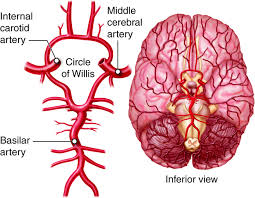Recognizing the signs of a stroke can make a significant difference in timely medical assistance. Strokes require immediate attention, and knowing how to identify warning signs, understand risk factors, and take appropriate action can have a vital impact on recovery outcomes. It can be helpful to explore how to recognize the signs of a stroke and the benefits of prevention.
What Is A Stroke?
A stroke occurs when blood flow to the brain is either blocked or reduced, preventing the brain from receiving the oxygen and nutrients it needs. Without this supply, brain cells begin to die within minutes. Strokes are broadly classified into two types. The most common is ischemic stroke, which results from blockages such as clots. The other is hemorrhagic stroke, which involves bleeding in the brain caused by ruptured blood vessels.
Strokes often have severe effects, which vary depending on the area of the brain affected, as it plays a role in controlling bodily functions. These effects might include difficulties with speech, movement, vision, or cognitive ability. Recognizing these disruptions early is central to managing and mitigating long-term consequences.
How Can You Recognize the Signs?
The FAST acronym provides a straightforward way to recognize stroke symptoms as they occur:
- F for Face Drooping: One side of the face may droop or feel numb. This can often be detected by asking the individual to smile and checking for asymmetry.
- A for Arm Weakness: Weakness or numbness in one arm is a common sign. Ask the person to raise both arms; observe whether one arm drifts downward or cannot be lifted at all.
- S for Speech Difficulty: Speech may be slurred, hard to understand, or absent. Ask the person to repeat a simple sentence and note whether their speech sounds unusual.
- T for Time to Call Emergency Services: If any of these signs are present, call emergency services immediately. Document the time your symptoms started, as this information helps medical professionals determine the best treatment approaches.
These symptoms can appear suddenly and should prompt immediate action to minimize the damage to the brain.
What Are The Risk Factors and How Can They Be Prevented?
Certain factors increase the likelihood of experiencing a stroke. Common risk factors include high blood pressure, smoking, obesity, diabetes, high cholesterol, and a sedentary lifestyle. While some risks, such as age and genetic predisposition, cannot be changed, others can be addressed through healthier habits. Preventive strategies may include maintaining a balanced diet, engaging in regular exercise, managing stress, and seeking regular blood pressure and cholesterol checks. These lifestyle modifications can significantly reduce the risk of other health complications.
How Are Strokes Screened and Diagnosed?
Stroke screenings are valuable tools for assessing individual risk levels and taking proactive measures. During a screening, medical professionals may conduct tests to measure blood pressure, cholesterol, and glucose levels. They may also recommend imaging tests, such as carotid ultrasounds or CT scans, for detecting potential blockages or abnormalities. Screenings are beneficial for individuals with a family history or those who exhibit risk factors. They provide insights into preventive actions that can help maintain long-term health.
Act FAST and Know Your Risk
Recognizing stroke signs and understanding risk factors are key steps in both prevention and timely action. Acting FAST when symptoms appear can reduce the effects of a stroke, and regular screenings can help identify risks early. Take this opportunity to learn more and consult a healthcare provider for a risk assessment of your stroke risk. Understanding these aspects can make a lifesaving difference.
- Personalized Approaches in Therapy Services for Lasting Change
- How to Choose the Right Cardiologist for Your Heart Care
- What To Expect During Your First Appointment With an Orthopedic Surgeon
- Understanding the Various Surgical Weight Loss Options Available
- Understanding Common Injuries Treated by Sports Medicine Specialists

Leave a Reply